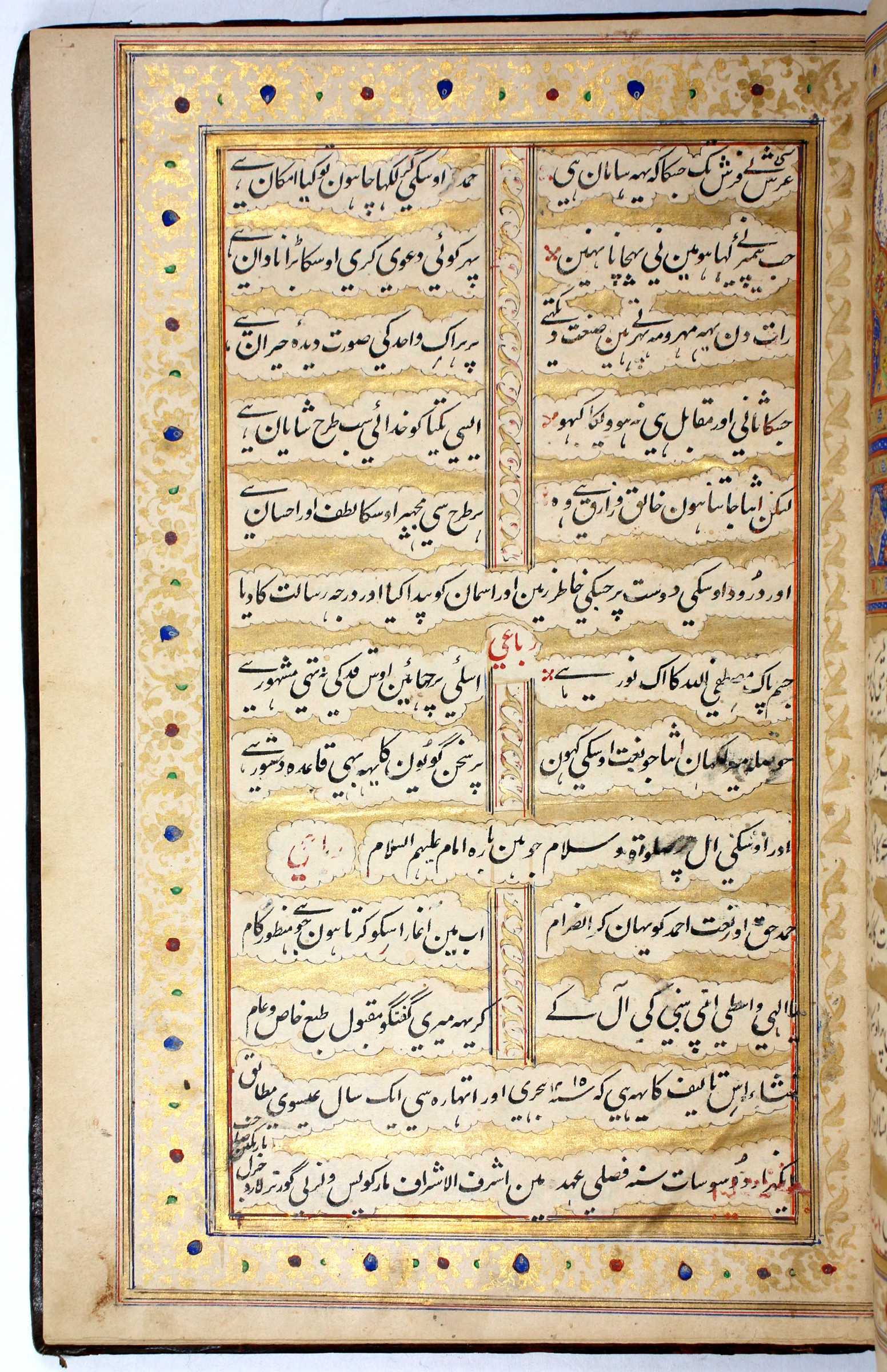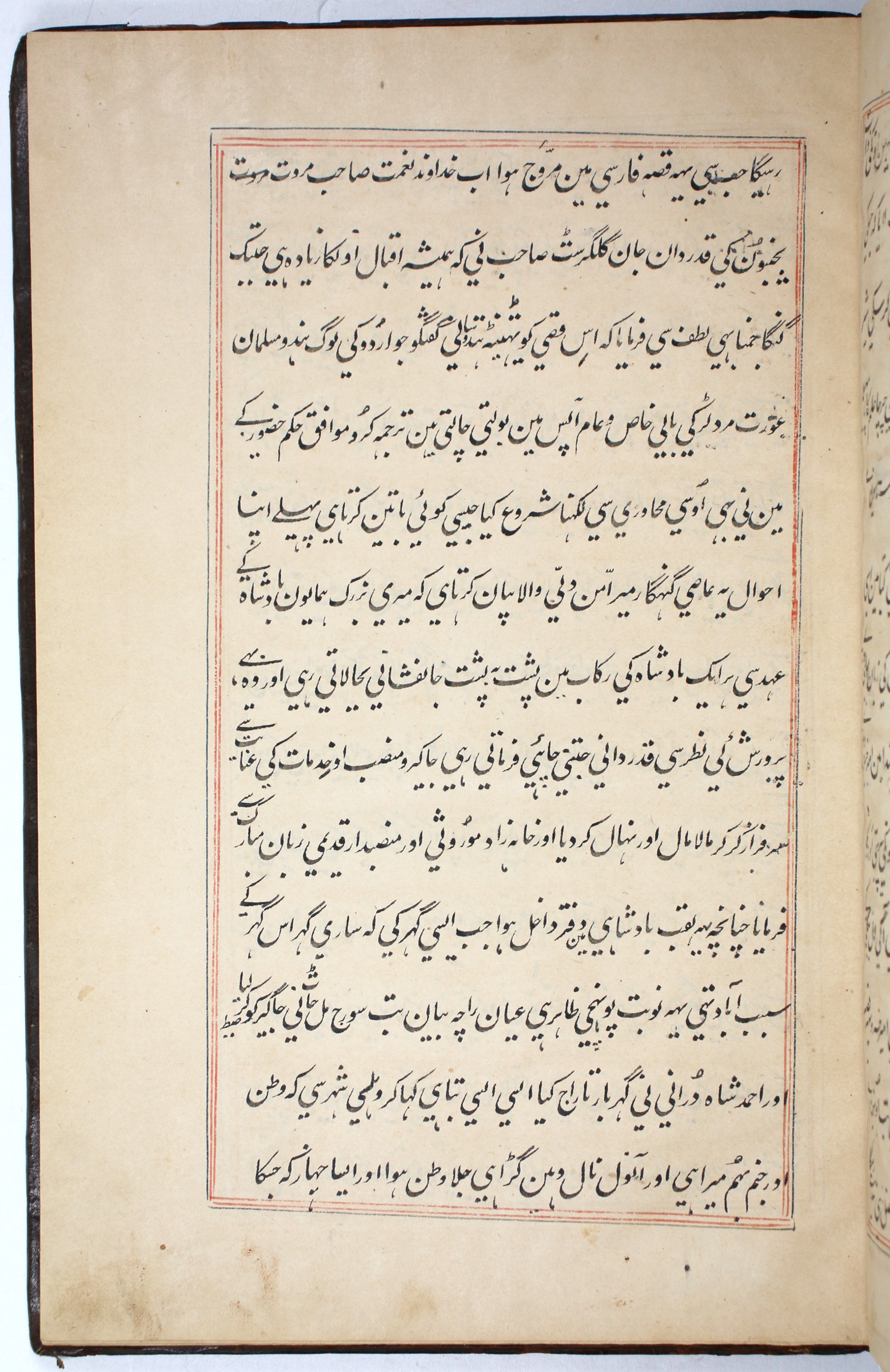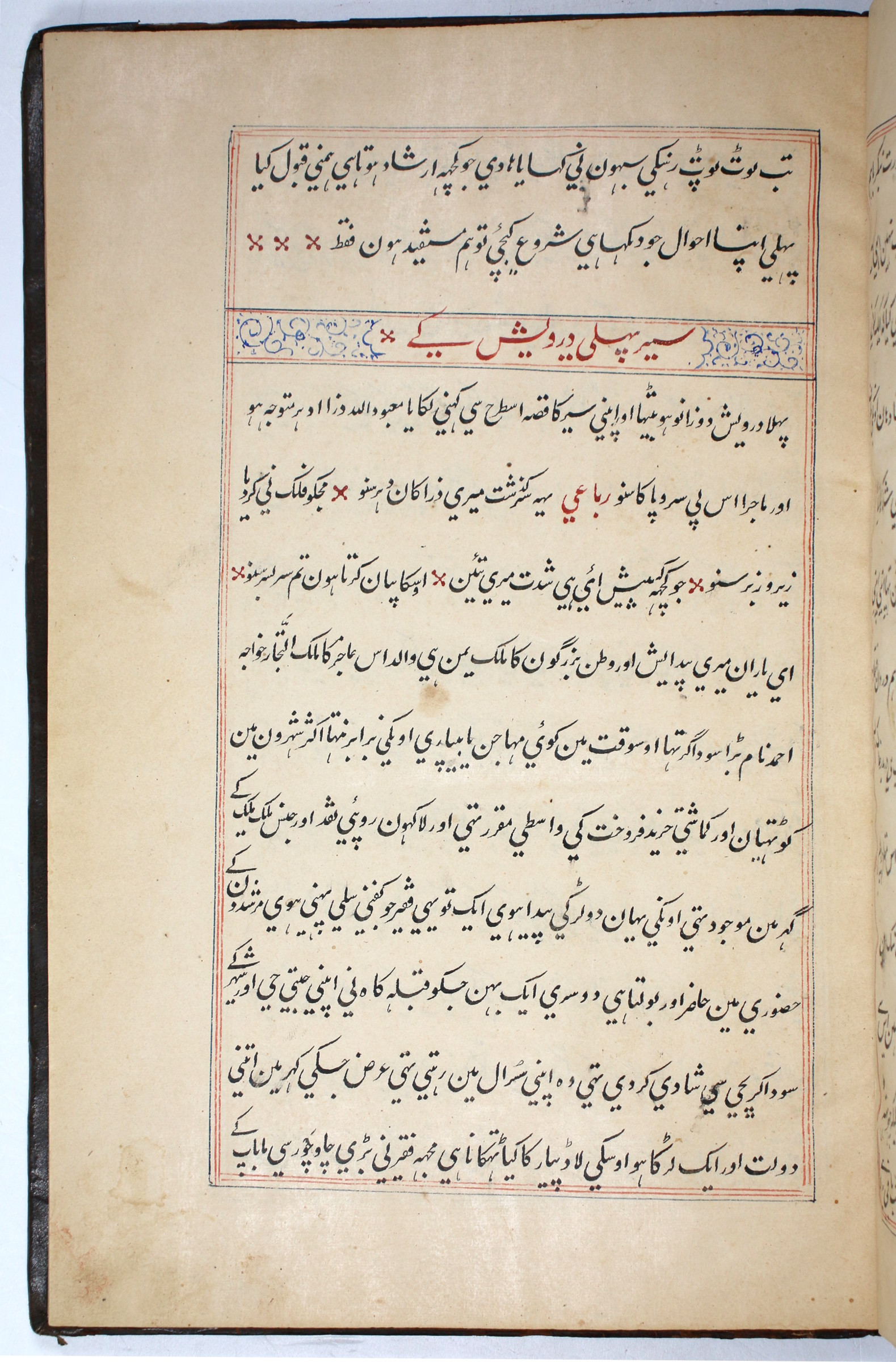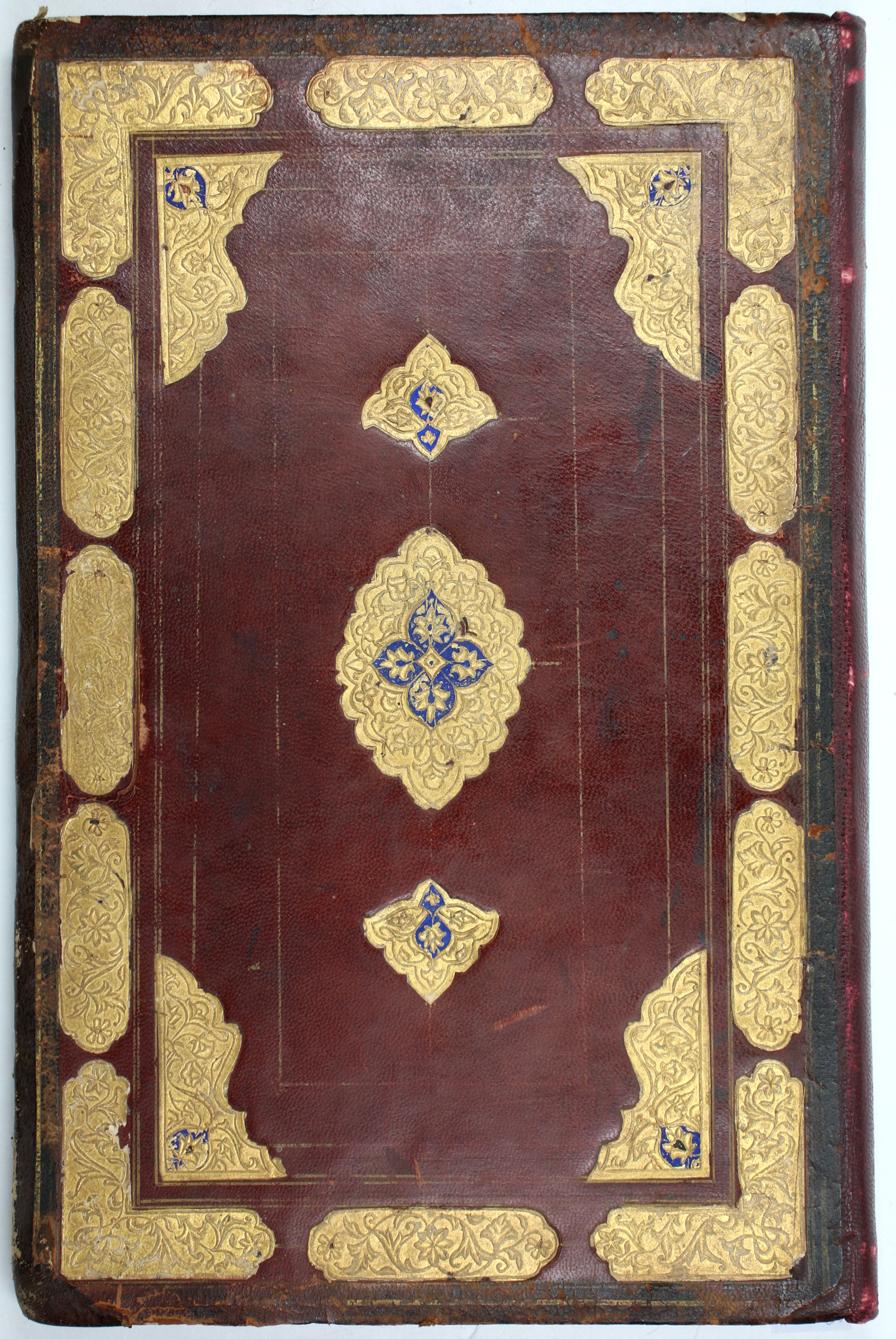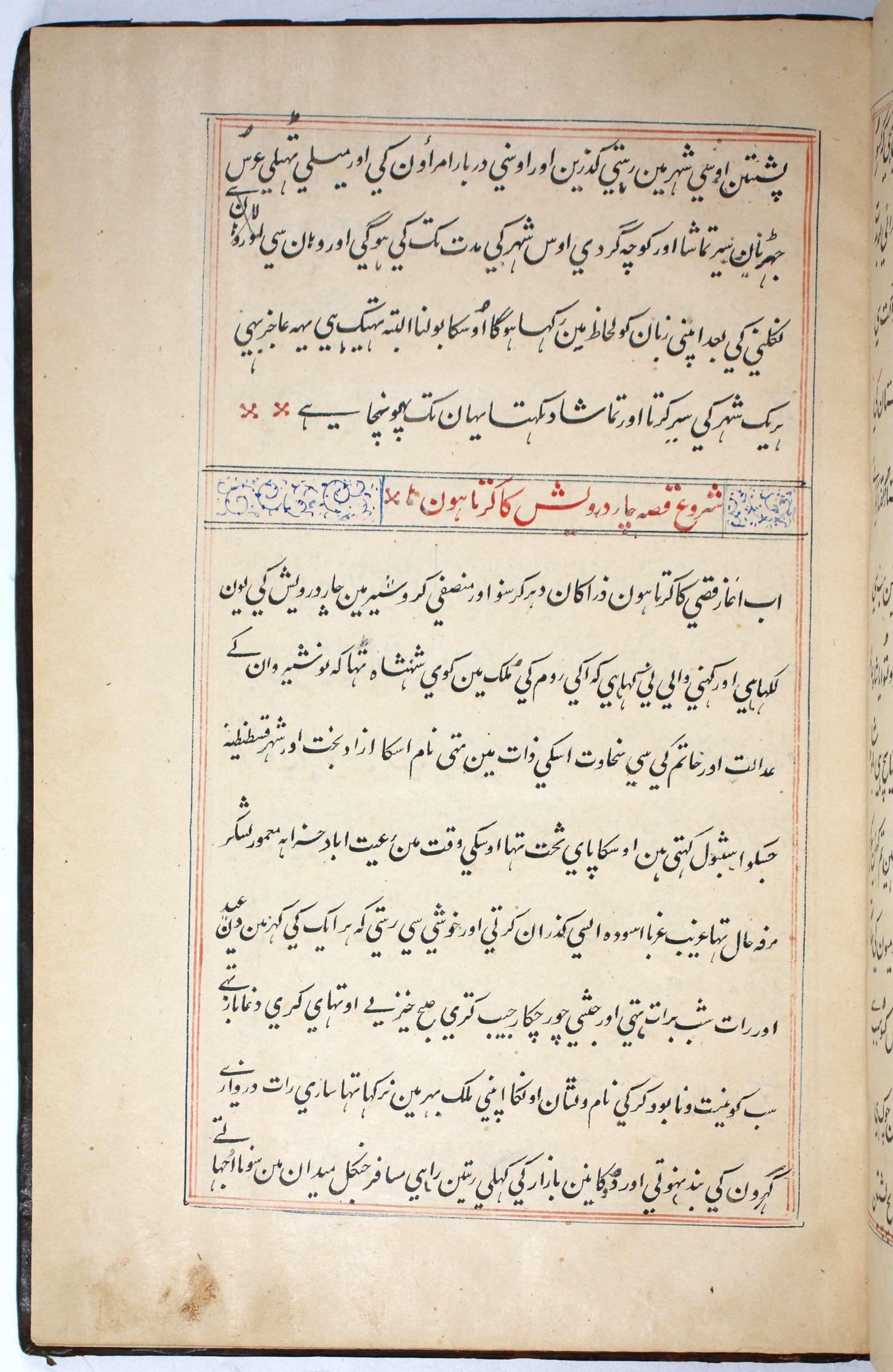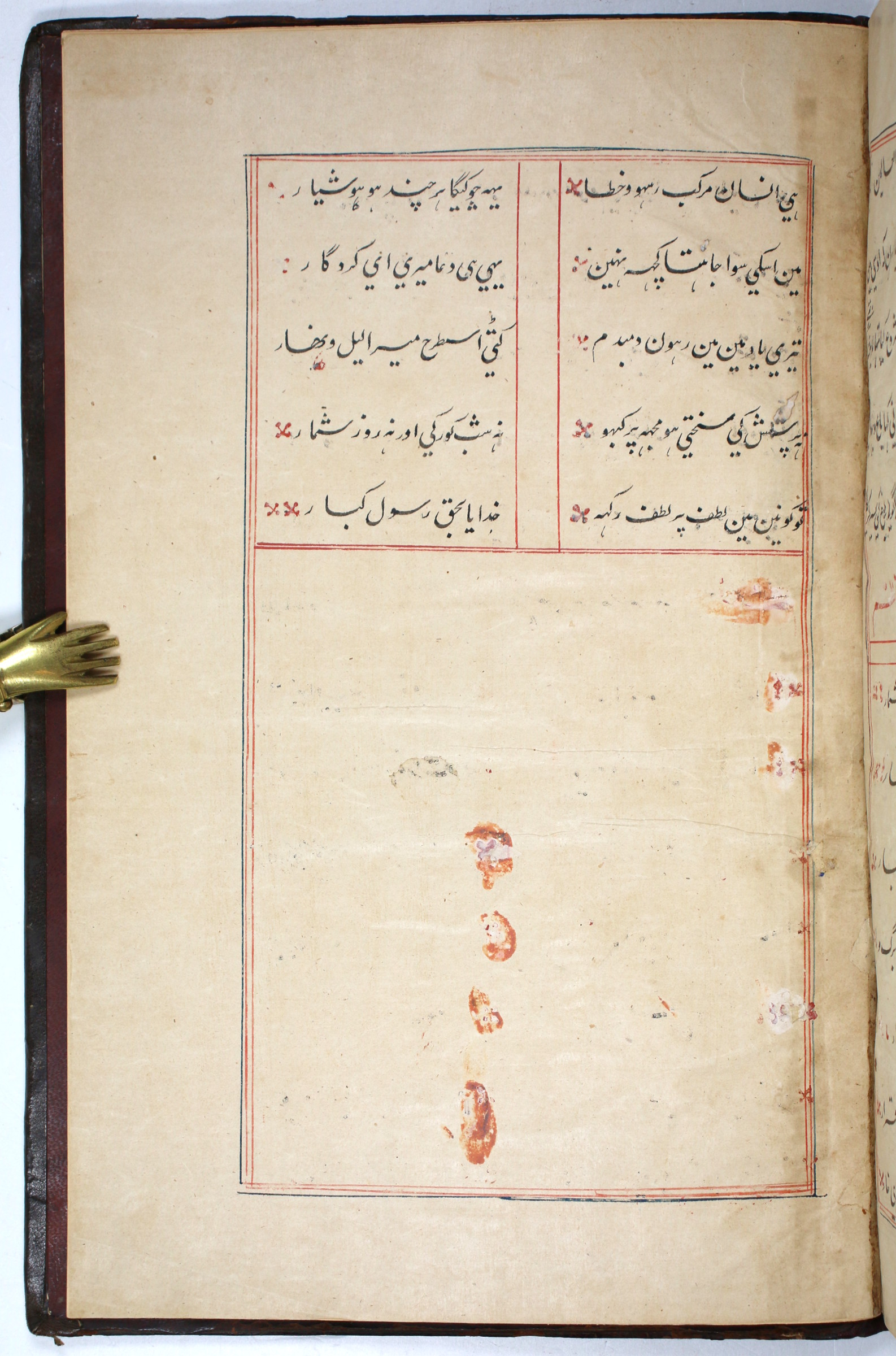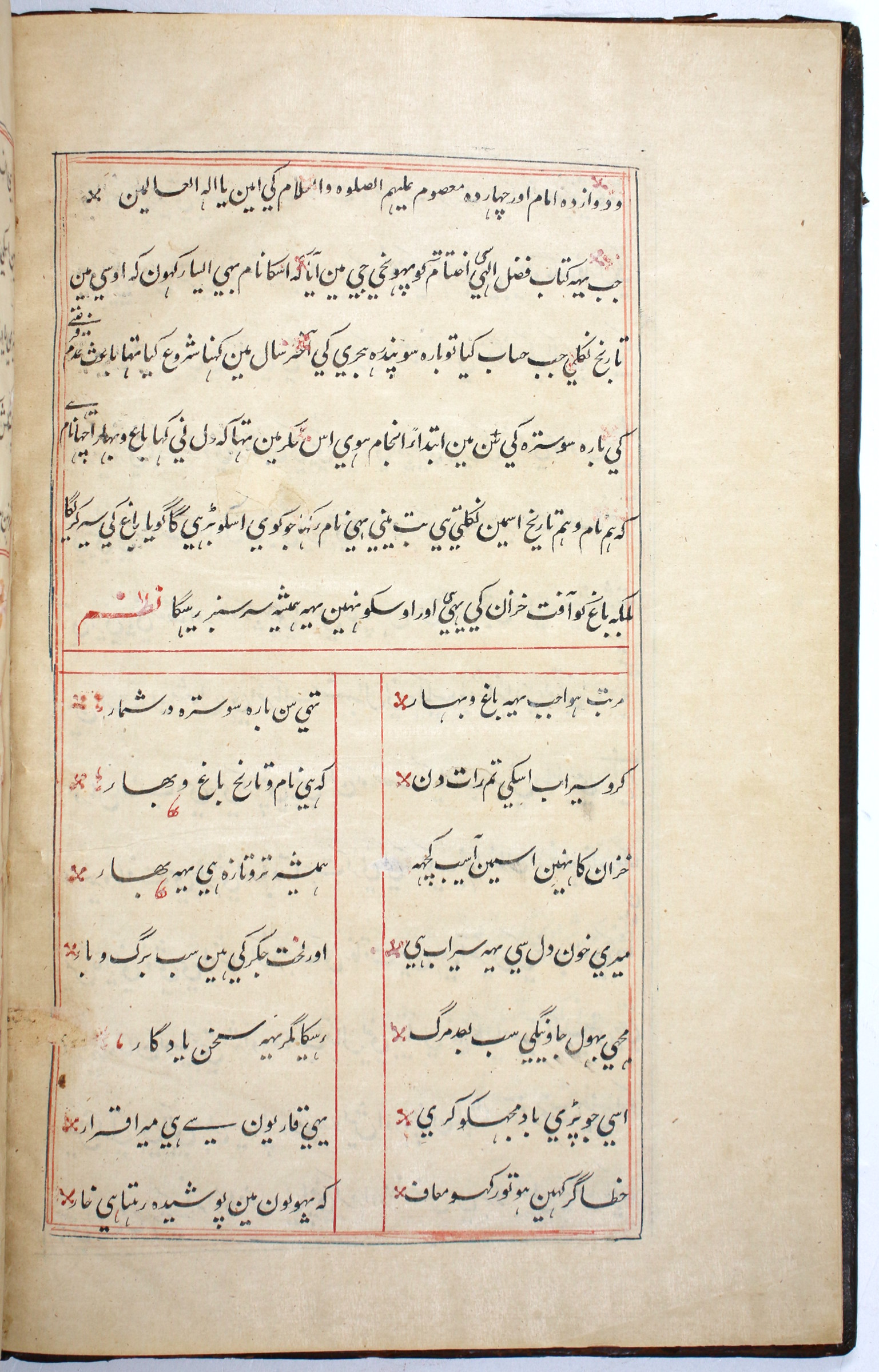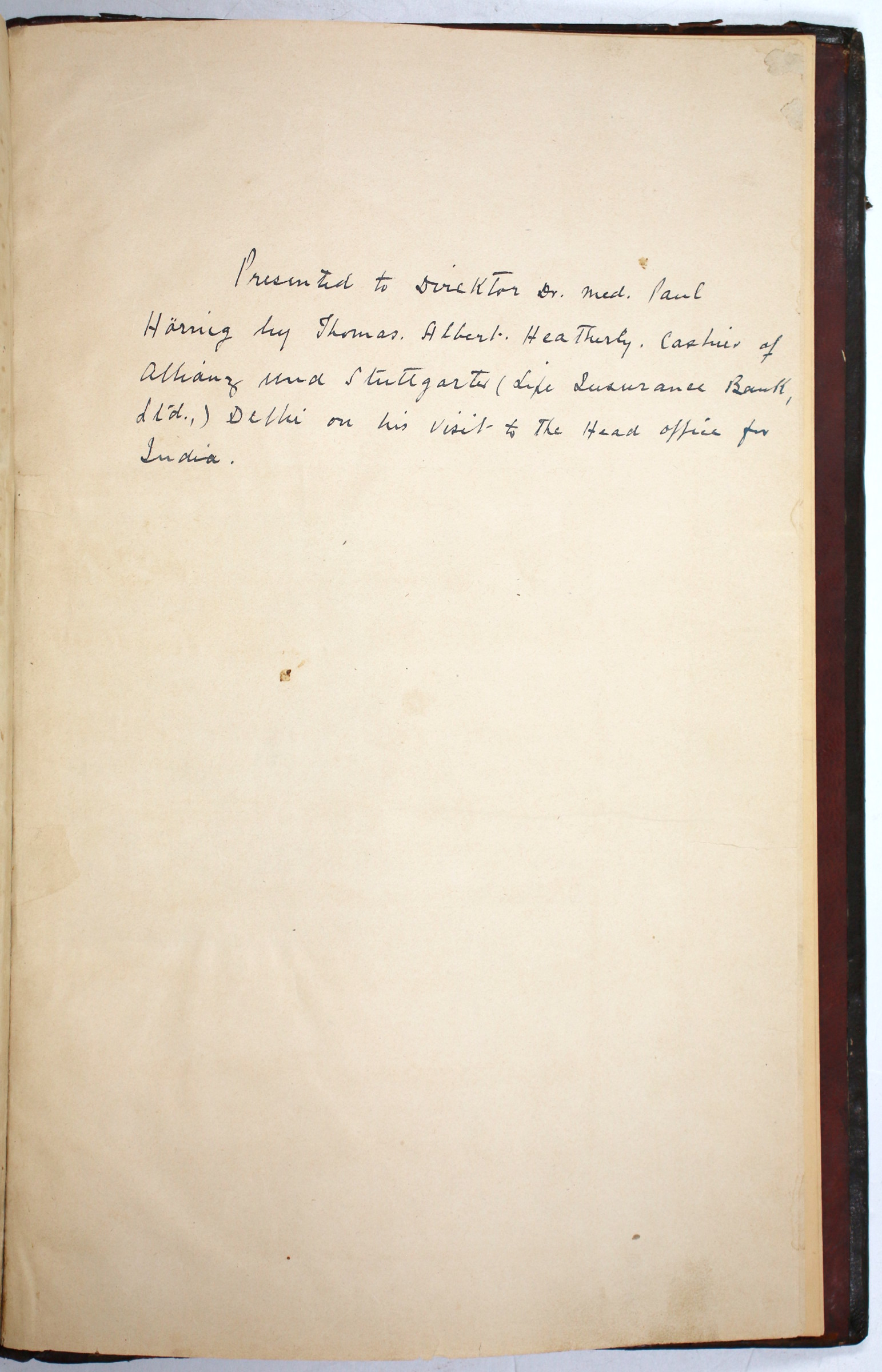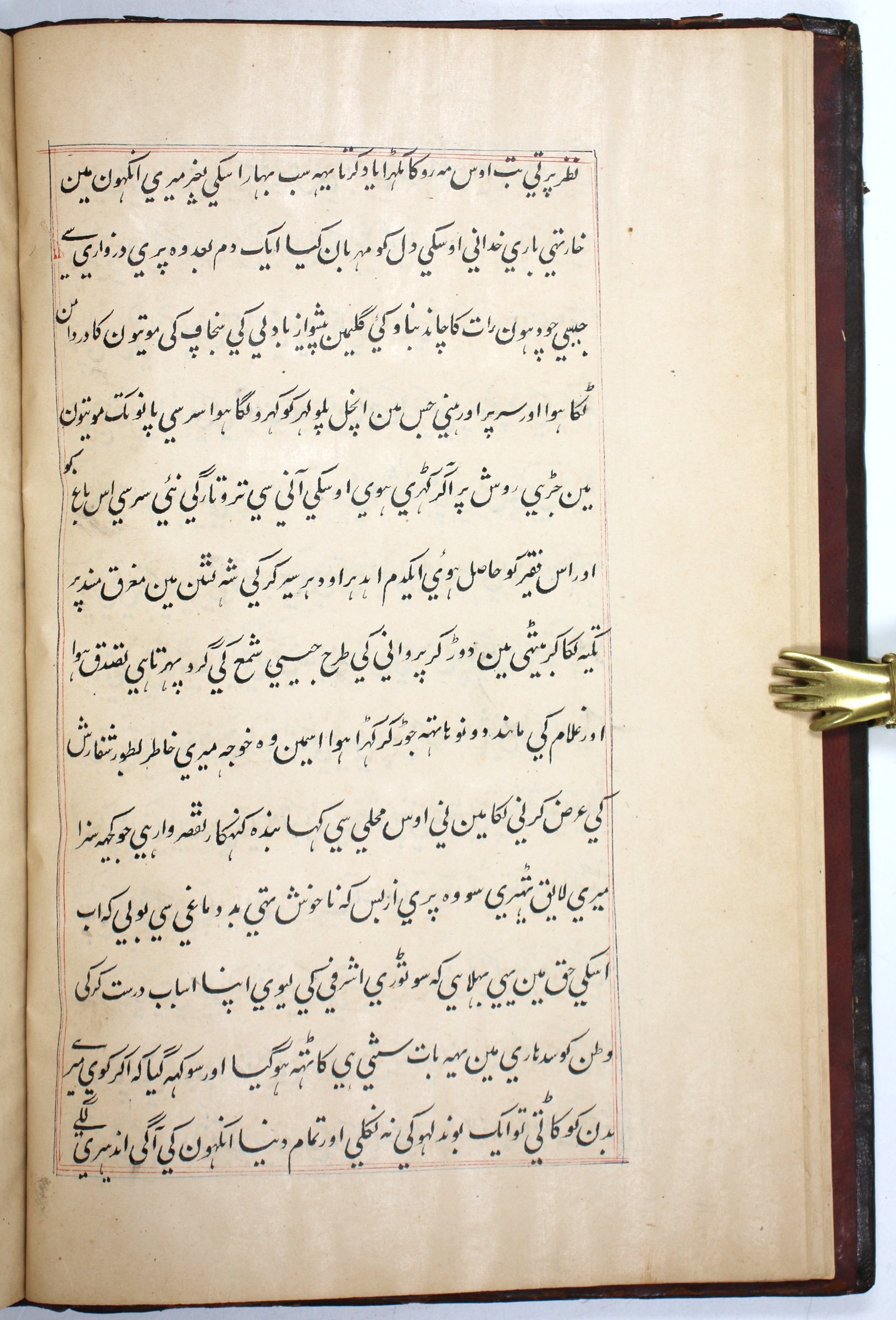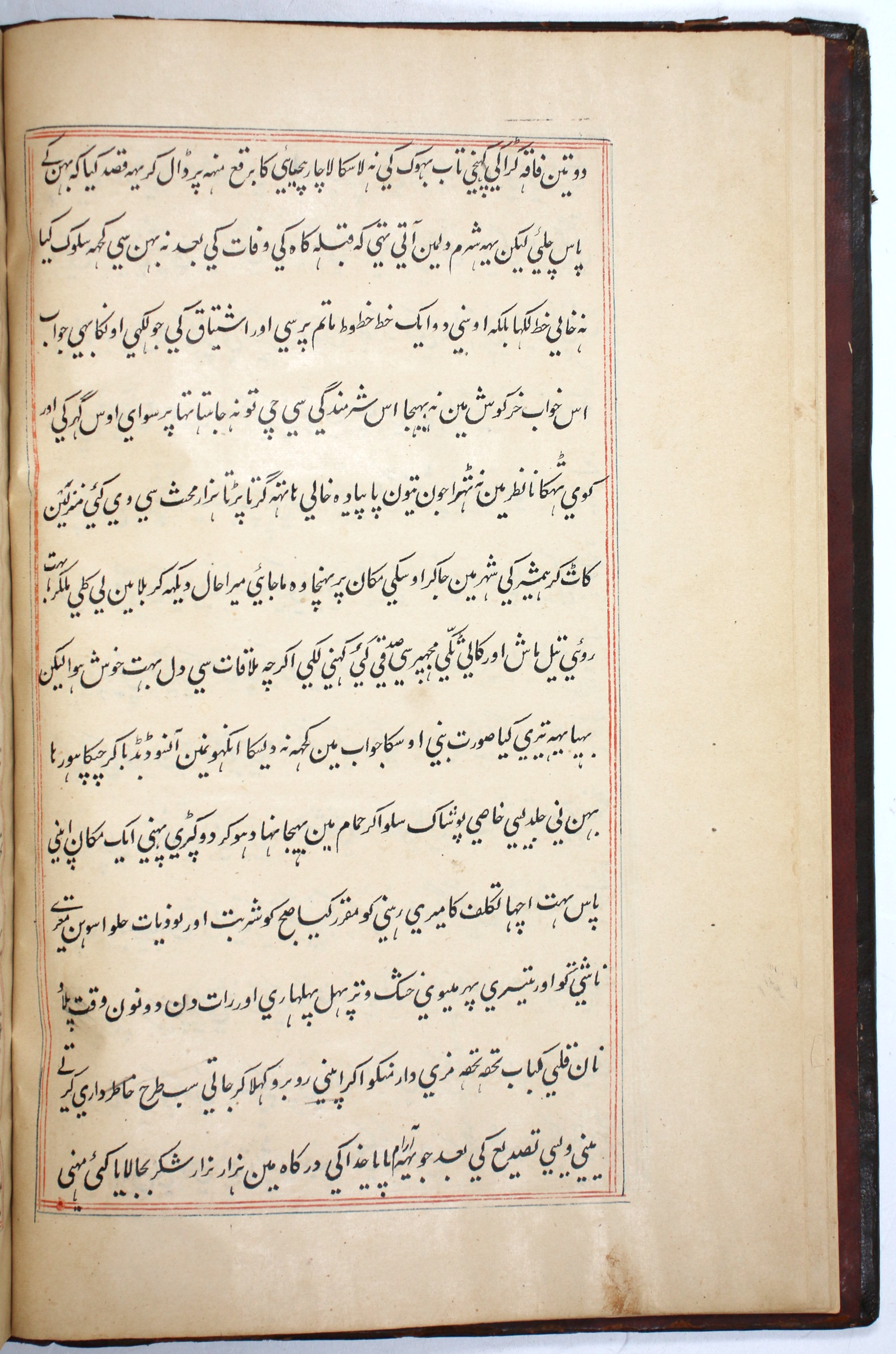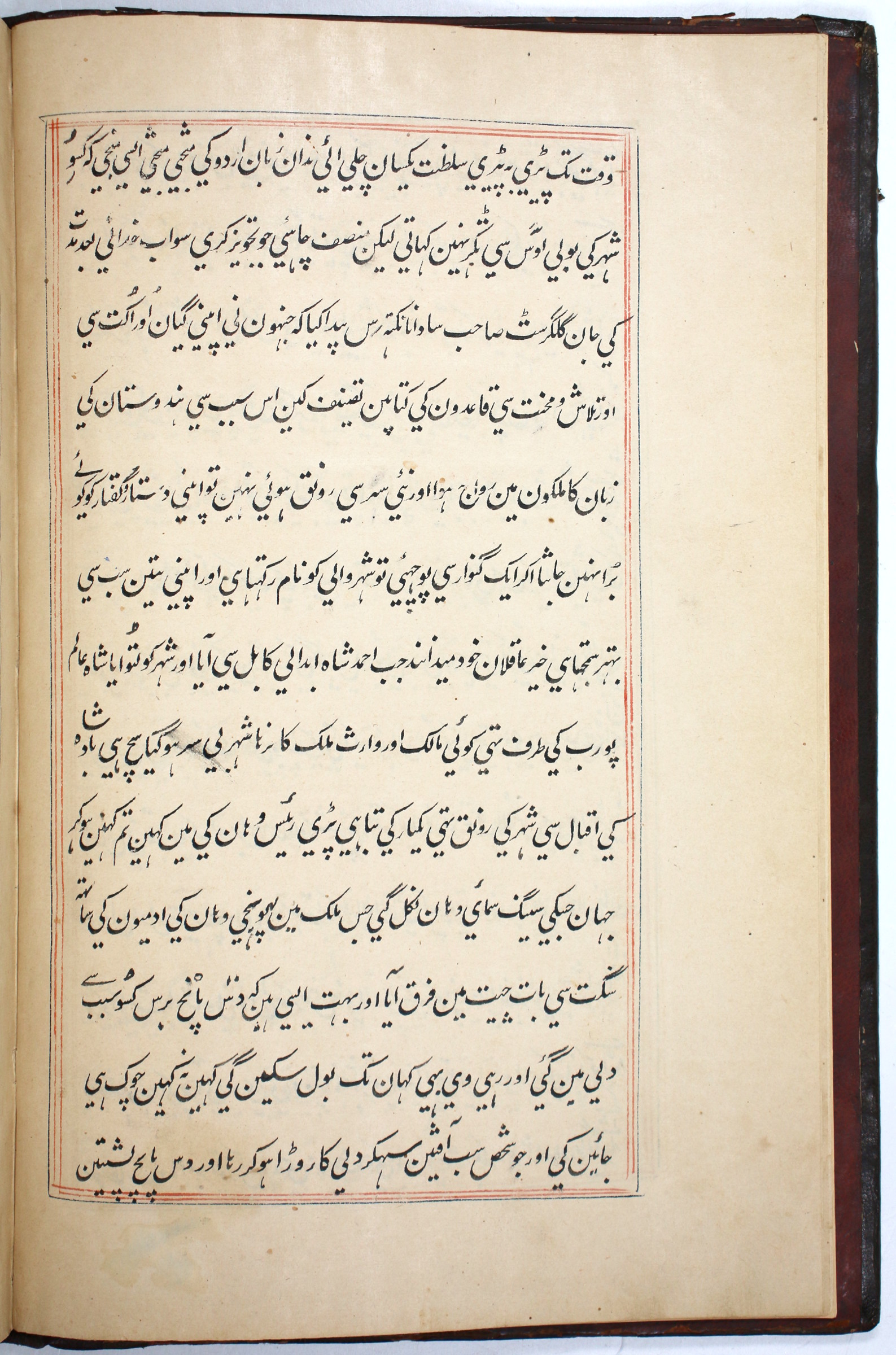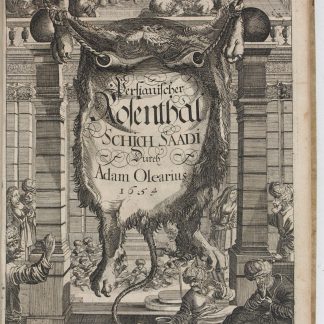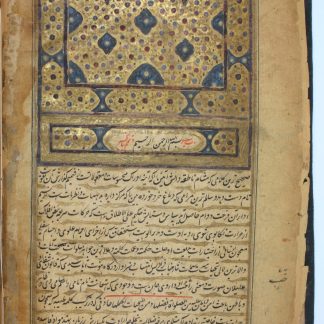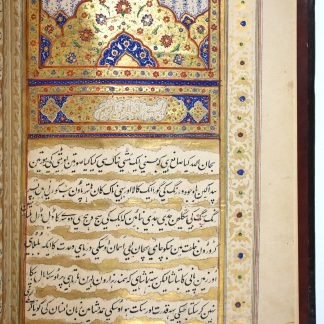A folktale masterpiece in Urdu
Bagh o Bahar [Garden and Spring].
Small folio (210 x 322 mm). 138 ff. Urdu manuscript on polished paper. Black nasta'liq script triple-ruled in red and blue, with important words and section titles in red; section titles additionally ruled in red and blue and decorated with blue foliated designs. With fine 'unwan heavily decorated in gilt, gilt floral borders, and gilt-backed text on first two pages. Contemporary maroon morocco with gilt panels, several hand-painted with blue pigment.
€ 18,000.00
A beautiful piece of Urdu literature and a very scarce manuscript, translated in 1801 by Mir Amman (1748-1806 CE) from one of the most beloved Persian folk tales, Amir Khusrau's "Four Dervishes". While the published editions in English and Urdu of his text are available to scholarship, manuscripts are surprisingly rare, with only two listed in institutional catalogues worldwide, and no trace of "Bagh o Bahar" manuscripts appear in auction records. This example was probably completed in the first half of the 19th century, potentially quite contemporary with Amman's translation and likely predating the published editions.
Mir Amman's Urdu translation, for which he coined the title "Bagh o Bahar", was in fact commissioned by the Scottish linguist John Gilchrist (1759-1841 CE), a member of the East India Company. While Gilchrist popularized the use of Urdu as the lingua franca of the British colonists (who, he was shocked to discover, did not often bother to learn any languages of the subcontinent) it was Amman's Urdu translation of "The Tale of the Four Dervishes" that has had the most lasting literary and cultural impact. Though Amir Khusrau's Persian original had been translated into Urdu once before, the previous translation was an esoteric and literary affair, difficult for most people to read. Amman, however, composed his translation in the Urdu of daily life, and the popularity of "Bagh o Bahar" reflects this. It is a lively folk tale with all the hallmarks of a good story (Malik the king of the jinns, princesses, kidnappings, and many marriages), brought to vivid life by Amman's skill in the Urdu vernacular. Its pages are decorated with gold, especially in an elaborate 'unwan and floral border which opens the story with a few lines of poetry and dedications to Amman's British patrons.
1) The offices of the East India merchants, active from the 1860s onwards, 'Wallace & Co., Bombay', with bookplate.
2) Thomas Albert Heatherly, India branch of Allianz & Stuttgarter insurance company, mentioned in gift inscription. 3) Gifted to Dr. med. Paul Hörnig during a visit to Delhi branch of Allianz. 4) With bookplate from 'Heuch, Balfour & Co., Manchester'.
Rebacked, spine replaced. A few minor paper repairs; in excellent condition.


